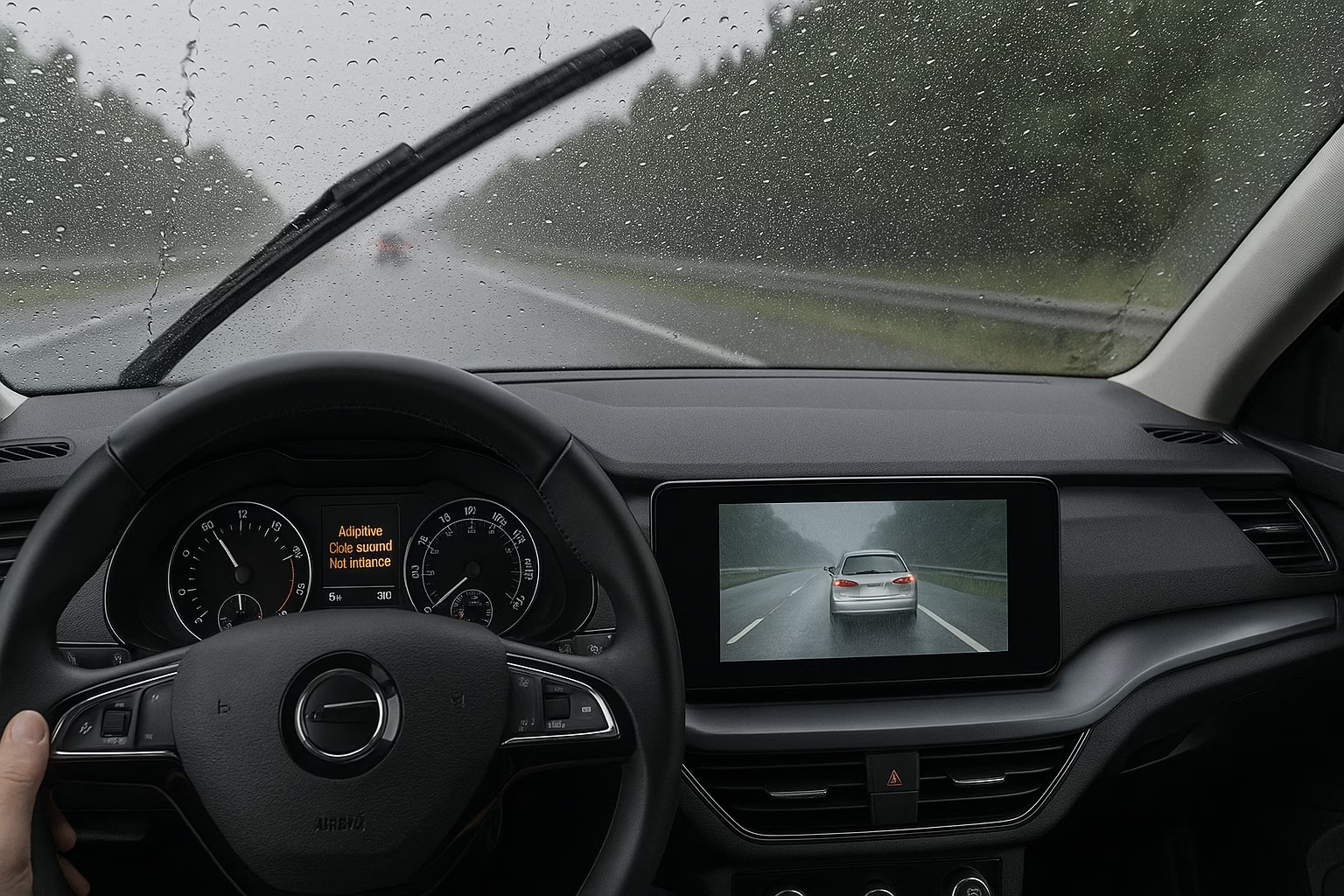Adaptive cruise control (ACC) is one of the more popular advanced driver-assistance features. It uses sensors, radar and sometimes cameras to maintain a set speed while automatically adjusting your distance from vehicles ahead. On the motorway it can reduce fatigue by keeping you at a safe following distance without constantly working the accelerator pedal. However, it’s important to remember that ACC is an assistant, not a self-driving system. You remain responsible for controlling the vehicle, steering, braking and monitoring the environment. In some situations, switching the system off and driving manually is the safest course.
Heavy traffic and stop–and–go conditions are common situations where ACC is best avoided. Most systems are designed for flowing traffic at higher speeds; when speeds drop below a certain threshold the system may disengage or behave unpredictably. In bumper–to–bumper traffic ACC may apply the brakes abruptly or hesitate when vehicles cut in. You often need to creep forward gently and be ready to react immediately – something the automation may not manage smoothly. It’s better to switch to normal cruise or just use the pedals so you can anticipate the ebb and flow of traffic.
Poor weather can also confuse the sensors that ACC relies on. Heavy rain or road spray may obscure radar sensors mounted behind the front grille, while fog, snow or ice can interfere with camera-based systems. If the sensors are dirty or blocked, the system may shut itself off or misjudge distances, leading to sudden braking or false alarms. Likewise, strong sun glare can overwhelm cameras. In such conditions you should slow down, increase your following distance and rely on your own judgement rather than an automated following distance.
Curvy and hilly roads are another area where manual control is often better. ACC assumes a reasonably straight road and steady speeds; when the road undulates or twists, the system may not anticipate corners or steep descents. On long downhills it may allow speed to creep up, requiring you to intervene with the brakes. Sharp bends can hide slower vehicles or obstacles until the last minute, and ACC might not respond quickly enough. Winding rural roads, mountain passes and city streets with frequent junctions are all places where it pays to drive yourself.
You should also avoid using ACC when towing, carrying a heavy load or driving off-road. Adding a trailer or roof load changes the weight and braking dynamics of your vehicle; the system’s assumptions about how quickly it can slow down may no longer apply. Unpaved surfaces, gravel roads or construction zones pose unpredictable traction, potholes and debris that demand constant speed adjustments. Likewise, merging lanes and overtaking require assertive acceleration and lane positioning that ACC may not provide.
Ultimately, adaptive cruise control is a tool to make long journeys smoother, not a set–it–and–forget safety net. Read your owner’s manual to understand the operating limits and be ready to resume control whenever conditions change. If you’re unsure whether it’s appropriate to engage ACC, err on the side of caution. For more tips on getting the most out of driver-assistance technology without overreliance, check out our article on the top mistakes drivers make with ADAS. By knowing when to turn aids off and trusting your own senses, you’ll stay safer and more comfortable on the road.
Before you use ACC, make sure radar sensors and camera lenses are clean. Dirt, bug splatter or snow can obscure the sensors and cause the system to disengage unexpectedly. If your car has been in a minor front-end collision or you’ve had the bumper replaced, have the ACC system checked and recalibrated by a qualified technician to ensure it’s measuring distance correctly.

Hiran Alwis is an automotive lecturer and ADAS specialist with over 15 years of experience in diagnostics, advanced safety systems, and technical training. He founded ADAS Project to help everyday drivers and workshop technicians understand and safely use advanced driver assistance systems.
